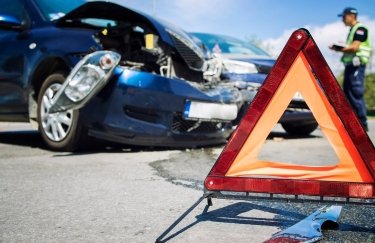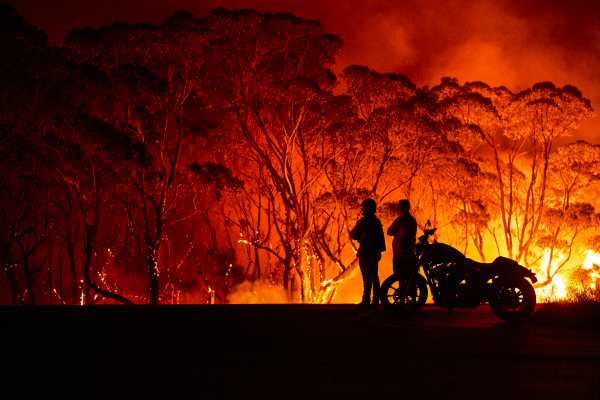
Share this story
-
Share this on Facebook
-
Share this on Twitter
-
Share
All sharing options
Share
All sharing options for:
7 things everyone should know about Australia’s wildfire disaster
-
Reddit
-
Pocket
-
Flipboard
-
Email
Since September, 15.6 million acres of Australia have burned in one of the country’s worst fire seasons on record. That’s an area larger than West Virginia, and more than eight times the area that burned in California in 2018, the state’s most destructive year for wildfires.
The fires have now killed at least 25 people and destroyed almost 2,000 homes. The blazes turned skies orange and made breathing the air in Sydney as bad as smoking 37 cigarettes. Those are just the impacts to people. The destruction to the country’s land and biodiversity is harder to fathom. An estimated 1 billion animals have been lost, and scientists fear long-term damage to many sensitive ecosystems.
Though rain brought firefighters a slight reprieve Wednesday, the AP reports that hot and windy conditions that will keep the fires burning are expected to return later this week.
It’s a disaster that’s particularly ominous: In a warming world, extreme fire events like this one will only grow more likely to occur.
Here’s what everyone should know about the crisis down under.
1) The fires broke out amid a record-breaking heat wave
The fires are concentrated along Australia’s southeast coast, in the states of New South Wales and Victoria. The southeast is the most severely affected, but fires have also hit every Australian state and territory this season.
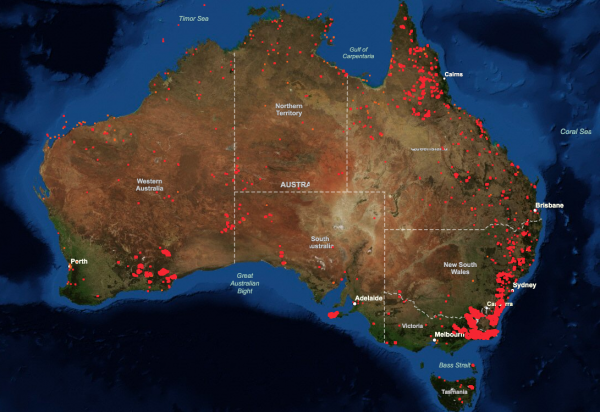
The fires started in various ways: some by lightning, some by human actions, including arson. However, it’s the climate conditions that provide ample fuel for the fires to grow and spread.
Before the fires ignited, Australia was already enduring its hottest and driest year on record. It’s summertime in the southern hemisphere, and the heat keeps rising.
Over the weekend, Sydney experienced its highest temperature on record. So did Australia’s capital Canberra. And triple-digit temperatures continue to bake huge swaths of the country.
Much of the severe heat was accompanied by brisk winds across much of Australia, which exacerbates fire risks and spreads blazes. Over the weekend, wind gusted up to 80 mph, fanning flames and pushing heavy smoke over major cities.
“The intensity and size of bushfires in some areas has led to the creation of their own weather systems,” the Red Cross reports, “generating pyrocumulonimbus clouds, trapping heat and generating strong wind and lightning strikes, in turn sparking further fires.”
High temperatures, dry weather, and wildfires are not unusual this time of year. But the severity and continued persistence of these fiery conditions are alarming and fit the pattern of what scientists expect as the climate changes.
2) Climate change is partly to blame. But so is weather variability.
This summer’s high temperatures and subsequent fires are linked to climate change, which drives long-term warming trends and makes these kinds of events more severe. Australia is also facing a severe drought, spurred by three winters in a row with very little precipitation. With drought conditions, there is less moisture evaporating in the heat, a phenomenon that usually has a cooling effect.
But the country’s geography is also a factor, as well as the unfortunate alignment of a few short-term weather patterns.
One sign a huge heatwave was coming was that the Indian Ocean Dipole, the cycle of the temperature gradient between the eastern and western parts of the Indian Ocean, was in its positive phase in 2019. That led to much less rainfall over Australia as prevailing winds pushed moisture gathering above the Indian Ocean away from the continent in the spring.
Related
As Australia burns, its leaders are clinging to coal
Another alarm bell was the Southern Annular Mode. This describes the movement of the circular belt of wind around Antarctica as it shifts north or south. It’s in its negative phase right now, bringing dry conditions to Australia.
And while Australia’s annual monsoon rains in the northern part of the country packed a devastating wallop in February, causing dangerous flooding in the state of Queensland, they were also behind schedule this year. That allowed more heat to accumulate over the central part of the country.
“So there was lots going on in terms of natural climate variability for this season to be quite hot,” Perkins-Kirkpatrick, a senior lecturer at the Climate Change Research Centre at the University of New South Wales, Sydney, explained.
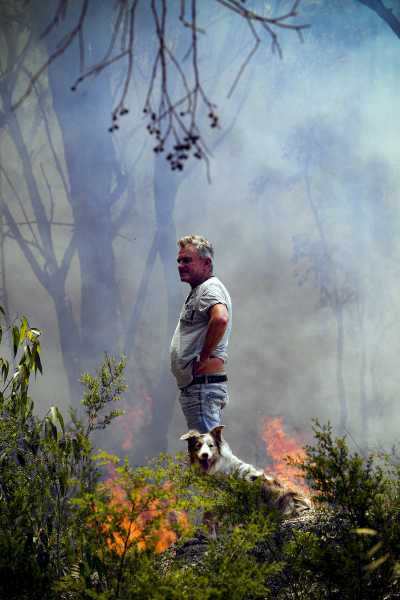
3) The bigger trend: Australia’s fire season is getting longer and more dangerous
Wildfires are a natural part of the ecosystem in Australia. Many plants and other organisms even depend on regular blazes to germinate, cycle nutrients, and clear decay.
That said, the climate is getting hotter due to human activities. And that extra heat makes fires more likely.
“Australia’s climate has warmed by just over 1° C since 1910, leading to an increase in the frequency of extreme heat events,” according to the Australian Bureau of Meteorology’s 2018 State of the Climate report. This has also led to more rainfall in northern Australia, but less in the southeast, where most Australians live, and where some of the most intense fires are burning.
The combination of rising heat and drier weather has turned vegetation into tinder, leaving trees, shrubs, and grass ready to ignite near some of the most densely populated parts of the country. “There has been a long-term increase in extreme fire weather, and in the length of the fire season, across large parts of Australia,” according to the climate report.
These fires may not be 100 percent attributable to climate change. But you can look at them and, at least, see a vision of the future: Scientists expect to see more extreme wildfires in Australia in the latter part of this century.
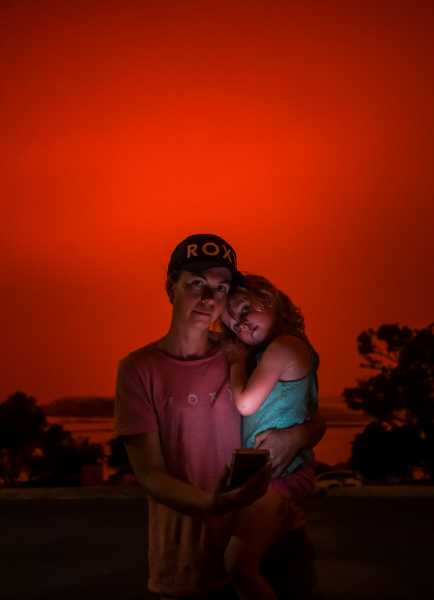
4) Australia is a biodiversity hotspot and millions of plants and animals are in danger
Australia is one of the great biodiversity hotspots in the world. The island continent was isolated from the rest of the world for millions of years, allowing evolution to take strange new paths, and until fairly recently, with little human influence.
Around 244 species of mammals are found only in Australia. Before the fires, its great diversity of life was already threatened due to invasive species, habitat destruction, and climate change, according to Australia’s science research agency, CSIRO. Now, ecologists are fearing severe ecological consequences from so much land being burnt at once.
“The whole concept of an ecosystem is about connectivity,” Manu Saunders, an ecologist at the University of New England in Australia, says. “Across whole forests there are millions of individuals, and hundreds of different species in those forests that all rely on each other. And if you lose one, it’s like a link in a chain, you then lose the others that it is connected to.”
The loss here is almost hard to fathom. A staggering 1 billion animals are now estimated dead, though there’s a good deal of uncertainty in that figure.
Many wild animals and some farm animals have been killed directly by the flames. We can see the evidence with our own eyes: Distressing images of burned kangaroos and koalas, and videos of dead animals on the sides of the roads, have circulated online over the past week.
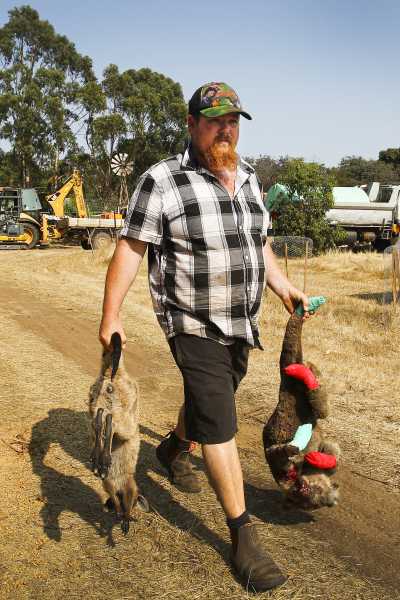
Other animals have not been burned alive but have faced death due to the destruction of their natural environment, which they rely on for food and shelter.
Initially, the number of animals killed was put at 480 million, an estimate that came from Chris Dickman, a biodiversity expert at the University of Sydney, last week. The truth is, it’s hard for anyone to know the precise impact of the fires at this stage, not least because many animals that survive the flames will likely die later due to lack of food, water, and shelter.
Regardless of the exact numbers, this is a crisis for biodiversity in Australia, which is home to some of Earth’s most distinctive animals, like marsupials.
But it’s not just charismatic animals like koalas (of which around 8,000 have died, while others are desperate for water). Even the loss of insects matters. “Invertebrates are absolutely critical for ecosystem function,” Saunders reminds. And they’re in harm’s way too. “They are the ones that build ecosystems from the ground up. They decompose decaying matter, they aerate the soil, they pollinate the plants, which then create the forests. The invertebrates are the ones that are structuring those systems, even though they might be invisible, or we don’t think about them so much.”
5) There’s lots of smoke
Where there’s fire, well, you know …

Smoke: It’s hard to overstate just how much smoke has been created. Compare the NASA Landsat satellite image on the left of the southeast coast on July 24, 2019, to the same region on New Year’s Day, during some of the most intense fires this season:
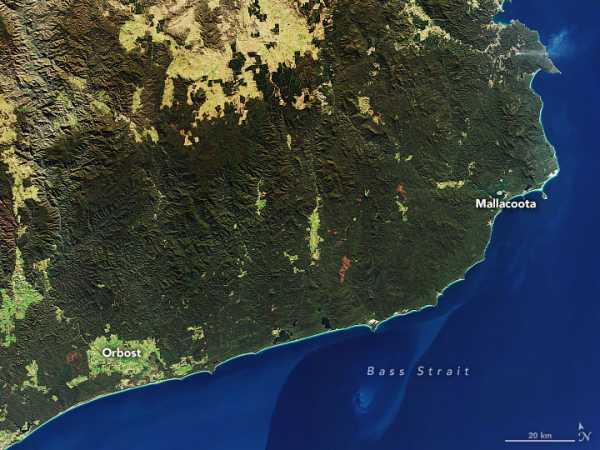
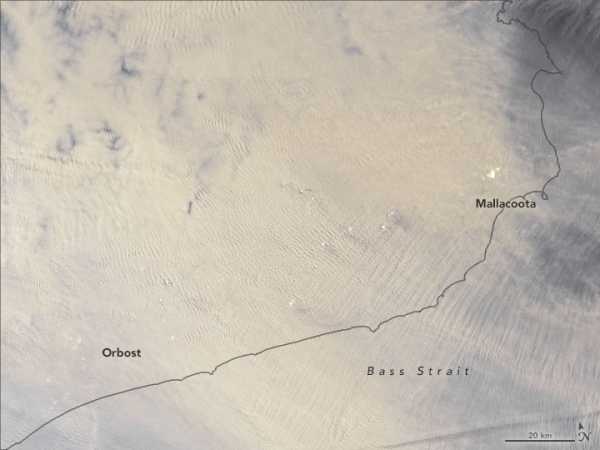
The smoke is so plentiful that NOAA reports it’s “in the process of circumnavigating the planet,” showing up over South America after being pushed there by the wind.
Smoke is a hazard in itself. It’s an irritating pollutant that exacerbates respiratory illnesses and heart problems. Fine particles from the smoke and soot can be smaller than 2.5 micrometers — tiny enough to lodge themselves into the crannies of the lungs and pass into the bloodstream.
“The biggest health threat from smoke comes from fine particles,” the US Environmental Protection Agency explains. “These microscopic particles can get into your eyes and respiratory system, where they can cause health problems such as burning eyes, runny nose, and illnesses such as bronchitis. Fine particles also can aggravate chronic heart and lung diseases — and even are linked to premature deaths in people with these conditions.”
6) Thousands of people’s lives are being massively disrupted, and the government’s response hasn’t been inspiring
The pace of destruction of Australia’s wildlife is eye-popping. Thousands of people are suffering, too. States of emergency have been declared in New South Wales and Victoria, and army reserve troops have been called up to assist in recovery efforts. Australia’s firefighting force is largely made up of volunteers, many of whom have had to forgo weeks of work at their regular jobs to fight the blazes.
Their work has been very difficult. “The pace at which the bushfires have spread and the subsequent heavy smoke have made it difficult for emergency services to access and evacuate some communities, at times forcing residents to flee to beaches and other water bodies to avoid impact and await rescue,” the Red Cross reports. In one case, 4,000 people in Mallacoota, Victoria, headed to the beach to be rescued. The main road heading into their town had been closed off.
“Power, fuel, and food supplies have been severely interrupted to some communities and road closures have been common,” the Red Cross continues. “This has resulted in some communities being isolated, or only accessible by air or sea (when smoke conditions allow).”
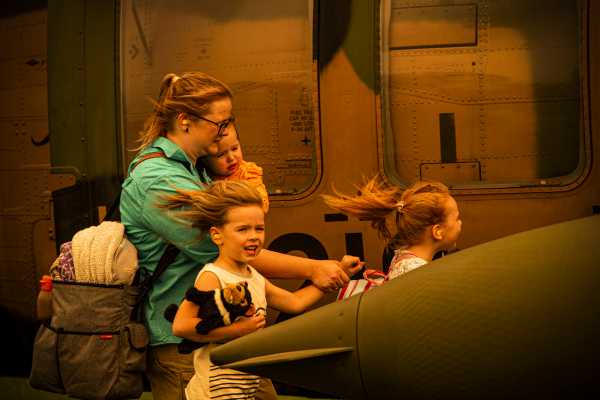
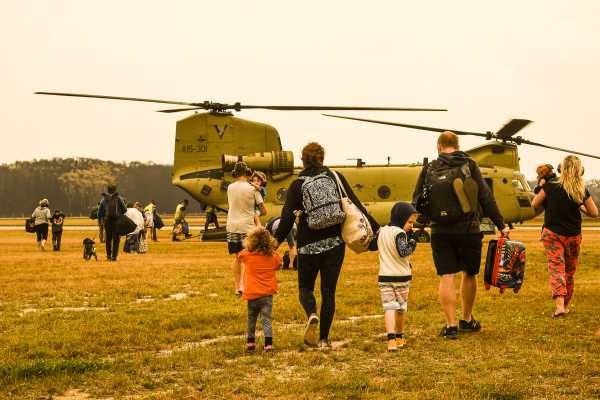
Australia’s government created a new National Bushfire Recovery Agency to help fund fire relief and authorized payments to volunteer firefighters, some of whom have now spent months on duty.
However, Australia’s elected leaders have been reluctant to confront the country’s contributions to climate change, a major factor in the bushfires. Australia is the world’s largest exporter of coal and both of Australia’s major parties are courting support from the country’s powerful mining industry. Prime Minister Scott Morrison in particular has refused to connect the dots between Australia’s reliance on coal, its greenhouse gas emissions, the ongoing blazes, and the consequences for Australians.
Beyond the destruction from the bushfires, Australians face other risks to their well-being. The extreme stress of losing homes, livelihoods, pets, and property can be difficult to cope with. As always in a natural disaster, mental health is a concern. After a major disaster, studies find a 5 percent to 15 percent increase in the incidence of mental health problems among survivors. That means the impacts of these devastating blazes will linger long after the last embers are snuffed out.
Related
The challenge of disaster relief
7) You can help
- If you’re in Australia, Givit has a list of specific items needed by people and organizations affected by the bushfires.
- People with emergency response training can sign up to volunteer in Queensland.
- The World Wildlife Fund is collecting donations to restore habitats for koalas impacted by the fires.
- You can donate to the Australian Red Cross’s fire recovery and relief fund.
- You can also donate directly to the New South Wales Rural Fire Service, the Country Fire Service Foundation in South Australia, and the Country Fire Authority in Victoria.
Sourse: vox.com

